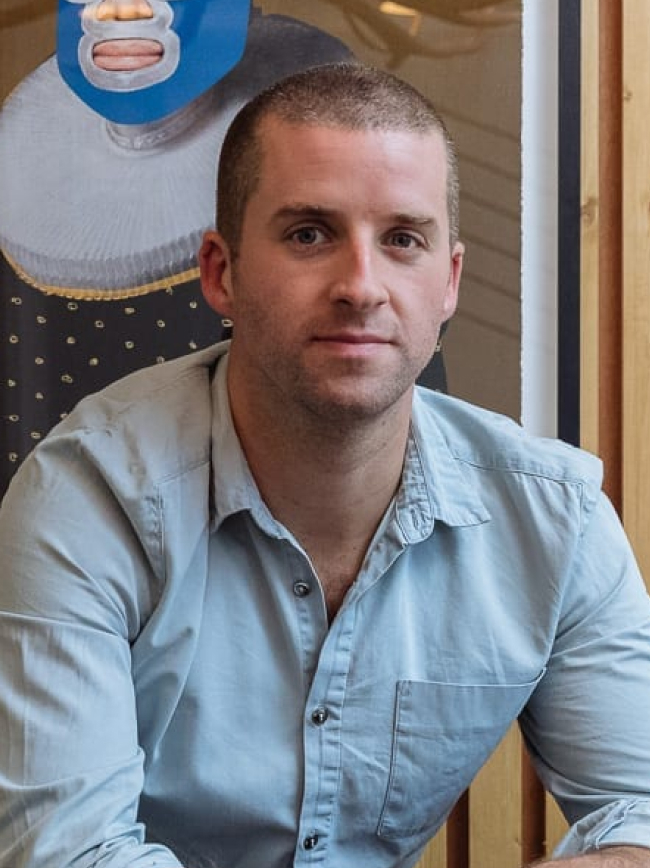ANA takeaway #1: Brand beats confusion – and drives leads

One of the pleasantly surprising things at the ANA Masters of B2B Marketing Conference in Chicago was the consistent message from multiple speakers about the importance of Brand (big ‘b’) within the B2B marketing landscape.
This chimes with what we at Earnest have increasingly seen over the past few years: that the divide between brand building and lead generation is increasingly blurred.
There’s a fairly common story doing the rounds in news media, business publications and marketing commentary that goes: the world is getting more complicated, the pace of change is accelerating and disruption is the new normal.
Against this backdrop, the divide between building brand and generating leads is more complex and less clear than it used to be – which has been the substance of many conversations around how successful marketing needs to function as we edge into the next decade.
The proposed solution is often that uncertainty and complexity must be met with strategy, tactics and tools that bring complexity under control and help us to reach B2B buyers in engaging ways. And there’s certainly a lot of credence to this, as demonstrated by the runaway success of platforms like Hubspot.
What was fascinating about many of the talks at ANA Chicago, was how many B2B marketing leaders and speakers from some of the world’s most interesting brands talked about the importance of brand in standing up to uncertainty and complexity.
“The world is predictably unpredictable, and having your values in order is the number one thing brands can do to be prepared.”
– Sahana Jayaraman, EVP Global Head of Digital & Brand Marketing, Hotwire
Using brand story and narrative as an anchor for creating meaning and preference may feel a bit marketing 101, but it’s amazing how often it’s overlooked in favour of technology or tactics.
“As marketers, it’s our job to make people care,” Andrea Brimmer, CMO of Ally Bank told us, “emotional connection and attraction to a brand is still the number one driver of preference.”
Brimmer continued “You interact with brands you love, not brands that have the best algorithm.”
And Ally Bank is not just talking the talk.
Ally rebranded from General Motors Acceptance Corp (GMAC) in 2010 and, during a decade since when both the consumer and business perception of banks has been deeply soured by the global economic crash, has worked hard to position itself in contrast to some very well established incumbent banking giants – and the rebrand has been central to its success.
“Brand can be a weapon for punching above your weight.”
– Andrea Brimmer, CMO Ally Bank
Brimmer told us how their brand strategy centred around three key phases:
- Incite – draw attention to issues impacting customers, like poor interest rates and terrible customer service.
- Improve – show how the Ally Bank offer is better value for customers
- Inspire – communicate and demonstrate brand purpose by doing good
It’s a great set of operating principles for thinking about how to bring a brand to life in the world, which calls to a mind a Seth Godin quote used by Victoria Morrissey, Global Marketing and Brand Director at Caterpillar in her excellent talk: “A brand is the set of expectations, memories, stories and relationships that, taken together, account for a consumer’s decision to choose one product or service over another.”
Morrissey talked through the excellent strategy and creative behind Caterpillar’s ‘Let’s do the work’ brand positioning.
Building on the increasingly in vogue ‘first principles’ as favoured by electric car maven Elon Musk and investment guru Charlie Munger (but originally Aristotle’s), Morrissey shared her own ‘Emotional First Principles’:
She calls them her “Emotional First Principles”:
- Story matters, story first
“Numbers lend credibility and validate a story but they don’t drive feelings.” Telling a powerful brand story is about much more than having your facts straight – it’s about finding the emotional and psychological levers that will help you reach your audience. - The whole is greater than the parts
“Find the unifying principle of the parts, as it adds up to something far greater.” The connective power of creativity needs to be layered on top of detail to turn customer segmentation and insight into powerful stories. - Creativity is worth fighting for
Morrissey quoted neuropsychologist Rex Jung to illustrate why creativity is essential to brand narrative: “The definition of creativity is something that is both useful and novel.”
Both Brimmer and Morrisey shared different stories but they were connected by a fundamental belief in brand story as a powerful and essential element in great marketing.
In a joint session with EY, Penry Price, VP Global Sales at LinkedIn, shared what they call the 45/55 rule: 45% of the marketing budget for B2B organisations should be allocated to brand building activity, and 55% to brand activation in the market.
“Marketers need to seek two-times growth, through brand building, broadly targeting audiences, and becoming expertise-focused.”
– Penry Price, VP Global Sales, LinkedIn
***
This is the first in our series of key takeaway posts covering the 5 main themes that came out of the ANA Masters of B2B Conference in Chicago
[Header photo: Matt Kilgour]
There was plenty of evidence at ANA Chicago that powerful B2B brand stories in B2B are being activated with supreme confidence and delivering serious ROI for their marketing departments.
The quality and rigour of brand building programmes and the positive impact they’re having on organisations’ growth ambitions were deeply satisfying to see.
Long live brand in B2B.
***
This is the first in our series of key takeaway posts covering the 5 main themes that came out of the ANA Masters of B2B Conference in Chicago
[Header photo: Matt Kilgour]
